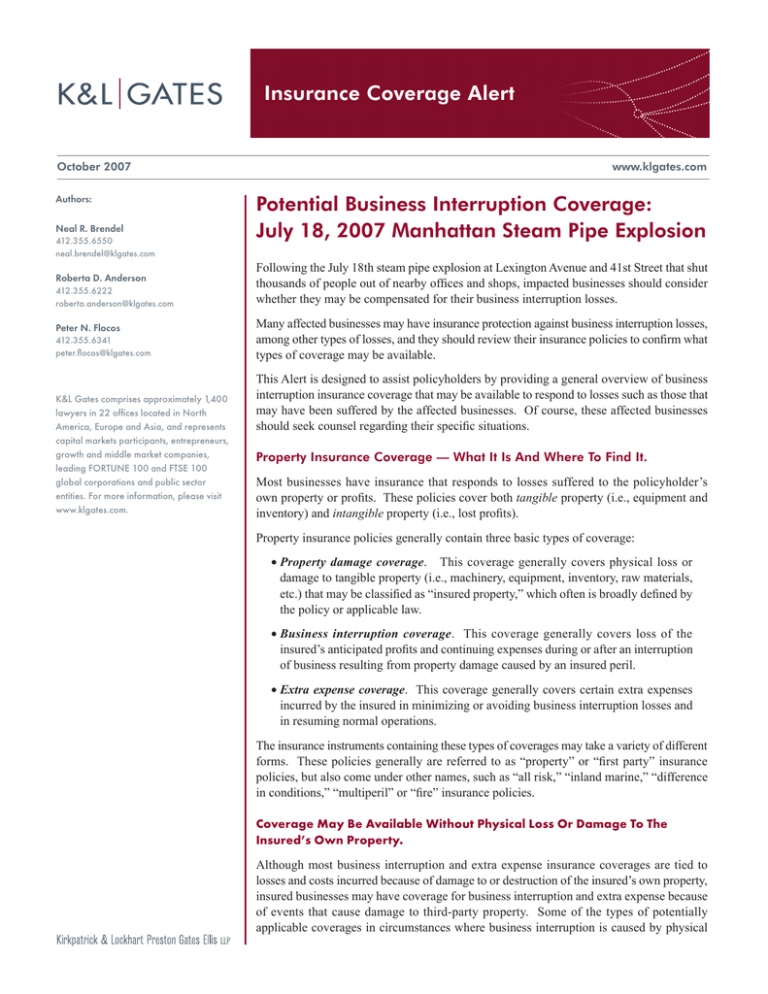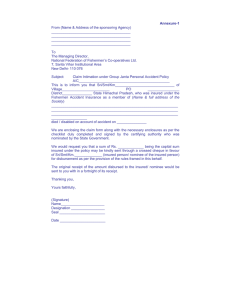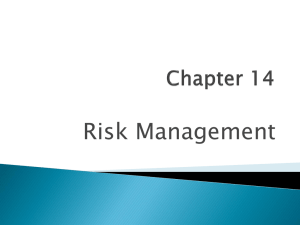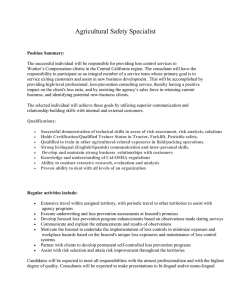
Insurance Coverage Alert
October 2007
Authors:
Neal R. Brendel
412.355.6550
neal.brendel@klgates.com
Roberta D. Anderson
412.355.6222
roberta.anderson@klgates.com
Peter N. Flocos
412.355.6341
peter.flocos@klgates.com
K&L Gates comprises approximately 1,400
lawyers in 22 offices located in North
America, Europe and Asia, and represents
capital markets participants, entrepreneurs,
growth and middle market companies,
leading FORTUNE 100 and FTSE 100
global corporations and public sector
entities. For more information, please visit
www.klgates.com.
www.klgates.com
Potential Business Interruption Coverage:
July 18, 2007 Manhattan Steam Pipe Explosion
Following the July 18th steam pipe explosion at Lexington Avenue and 41st Street that shut
thousands of people out of nearby offices and shops, impacted businesses should consider
whether they may be compensated for their business interruption losses.
Many affected businesses may have insurance protection against business interruption losses,
among other types of losses, and they should review their insurance policies to confirm what
types of coverage may be available.
This Alert is designed to assist policyholders by providing a general overview of business
interruption insurance coverage that may be available to respond to losses such as those that
may have been suffered by the affected businesses. Of course, these affected businesses
should seek counsel regarding their specific situations.
Property Insurance Coverage — What It Is And Where To Find It.
Most businesses have insurance that responds to losses suffered to the policyholder’s
own property or profits. These policies cover both tangible property (i.e., equipment and
inventory) and intangible property (i.e., lost profits).
Property insurance policies generally contain three basic types of coverage:
•P
roperty damage coverage. This coverage generally covers physical loss or
damage to tangible property (i.e., machinery, equipment, inventory, raw materials,
etc.) that may be classified as “insured property,” which often is broadly defined by
the policy or applicable law.
•B
usiness interruption coverage. This coverage generally covers loss of the
insured’s anticipated profits and continuing expenses during or after an interruption
of business resulting from property damage caused by an insured peril.
•E
xtra expense coverage. This coverage generally covers certain extra expenses
incurred by the insured in minimizing or avoiding business interruption losses and
in resuming normal operations.
The insurance instruments containing these types of coverages may take a variety of different
forms. These policies generally are referred to as “property” or “first party” insurance
policies, but also come under other names, such as “all risk,” “inland marine,” “difference
in conditions,” “multiperil” or “fire” insurance policies.
Coverage May Be Available Without Physical Loss Or Damage To The
Insured’s Own Property.
Although most business interruption and extra expense insurance coverages are tied to
losses and costs incurred because of damage to or destruction of the insured’s own property,
insured businesses may have coverage for business interruption and extra expense because
of events that cause damage to third-party property. Some of the types of potentially
applicable coverages in circumstances where business interruption is caused by physical
Insurance Coverage Alert
damage to property other than the insured’s property
include the following:
• Contingent business interruption coverage.
This coverage generally is designed to cover
an insured with respect to losses, including lost
earnings or revenue, as a result of damage to
property of a supplier or customer or some other
business partner or entity, as opposed to damage
to the insured’s own property.
• Contingent extra expense coverage. This
coverage generally is designed to pay for an
insured’s increased costs incurred to minimize or
avoid a contingent business interruption claim.
• Ingress/egress coverage. This coverage
generally is designed to cover an insured for
business interruption caused by physical loss or
damage to third-party property that prevents or
hinders ingress to or egress from the insured’s
business.
• Civil authority coverage. This coverage, which
is often listed as an “additional coverage” in
property insurance policies, generally is designed
to cover an insured for business interruption
losses incurred as a result of an order or directive
by a civil or military authority, made as a result
of property damage, which prevents access to the
insured’s place of business.
• Leader property coverage. This coverage
generally is designed to cover an insured for
business interruption losses resulting from
damage or destruction to third-party property
that attracts customers or business to the insured.
For example, a large department store may attract
customers to an area that also is occupied by
other, smaller tenants. Without the department
store, general customer traffic in the area would
diminish, leading to reduced sales for the smaller
tenants.
• Service interruption coverage. This coverage
generally is designed to cover an insured for
business interruption losses attributable to
dislocation of electric or other power supply
interruptions or telecommunications services.
• Claim preparation coverage. This coverage
generally is designed to cover an insured for the
costs associated with compiling and certifying
a claim.
These coverages, which are found in many property
insurance policies, may play a key role for businesses
that have been spared physical loss or damage, but
that nonetheless are affected by third-party property
damage.
In addition to these coverage features that are often
set forth in general first-party property policies, many
businesses may have specialty policies potentially
responsive to particular situations as well. Some of
the relevant insurance policy provisions are relatively
obscure, as they are not frequently implicated. Thus, it
is important for an insured to ensure that all potentially
responsive insurance policies, and provisions of those
policies, are considered and evaluated as a potential
source of recovery.
In virtually all cases, in presenting a claim, the policy
provisions should be considered against the backdrop
of potentially applicable insurance coverage law to
ensure that the insured is taking the steps necessary to
maximize coverage.
Presenting A Claim.
Most policies purport to identify specific procedures
that should be followed in presenting a claim (notice,
proof of loss, suit limitation, etc.), and some of these
procedures may have timing deadlines associated
with them. Moreover, the manner in which a claim is
presented can sometimes have an impact on the ultimate
recovery. For example, policies may have different
deductibles depending on the particular peril causing
the loss, and the policyholder’s presentation of the claim
could impact the deductible applied. Deductibles (and
limits) also may be expressed “per occurrence” or “per
loss” or in other ways, and, again, presentation of the
claim could affect the number of deductibles applied or
the amount of the limits available. Policies also may
have specific exclusions applicable to certain perils or
circumstances that the insured should take into account
in presenting its claim. In all cases, an insured should
promptly collect and document its loss information,
evaluate the information in light of the policy wording
and applicable law, and present it to the appropriate
insurer or insurers in a timely and coverage-promoting
manner. It is sometimes advisable or necessary to
retain forensic accountants to assist in preparing and
certifying a claim, and the costs associated with such
an effort often are covered. If purported deadlines have
passed, the insured’s pursuit of an insurance claim is
October 2007 | Insurance Coverage Alert
not necessarily foreclosed. It may be that the insurer
must show that it has been prejudiced by an insured’s
failure to meet a timing deadline before coverage will
be forfeited on this basis.
Conclusion.
Businesses affected by the recent Manhattan steam
pipe explosion are well advised to review their firstparty coverages and give insurers appropriate notice
of potentially covered losses. In many cases, early
identification, characterization and presentation of loss
information, in light of potentially applicable insurance
policy provisions and insurance coverage law, can
make a substantial difference in a policyholder’s
ultimate insurance recovery.
K&L Gates comprises multiple affiliated partnerships: a limited liability partnership with the full name Kirkpatrick & Lockhart Preston Gates Ellis LLP qualified
in Delaware and maintaining offices throughout the U.S., in Berlin, and in Beijing (Kirkpatrick & Lockhart Preston Gates Ellis LLP Beijing Representative
Office); a limited liability partnership (also named Kirkpatrick & Lockhart Preston Gates Ellis LLP) incorporated in England and maintaining our London
office; a Taiwan general partnership (Kirkpatrick & Lockhart Preston Gates Ellis) which practices from our Taipei office; and a Hong Kong general
partnership (Kirkpatrick & Lockhart Preston Gates Ellis, Solicitors) which practices from our Hong Kong office. K&L Gates maintains appropriate registrations
in the jurisdictions in which its offices are located. A list of the partners in each entity is available for inspection at any K&L Gates office.
This publication/newsletter is for informational purposes and does not contain or convey legal advice. The information herein should not be used or relied
upon in regard to any particular facts or circumstances without first consulting a lawyer.
Data Protection Act 1998—We may contact you from time to time with information on Kirkpatrick & Lockhart Preston Gates Ellis LLP seminars and with our
regular newsletters, which may be of interest to you. We will not provide your details to any third parties. Please e-mail london@klgates.com if you would
prefer not to receive this information.
©1996-2007 Kirkpatrick & Lockhart Preston Gates Ellis LLP. All Rights Reserved.
October 2007 |





